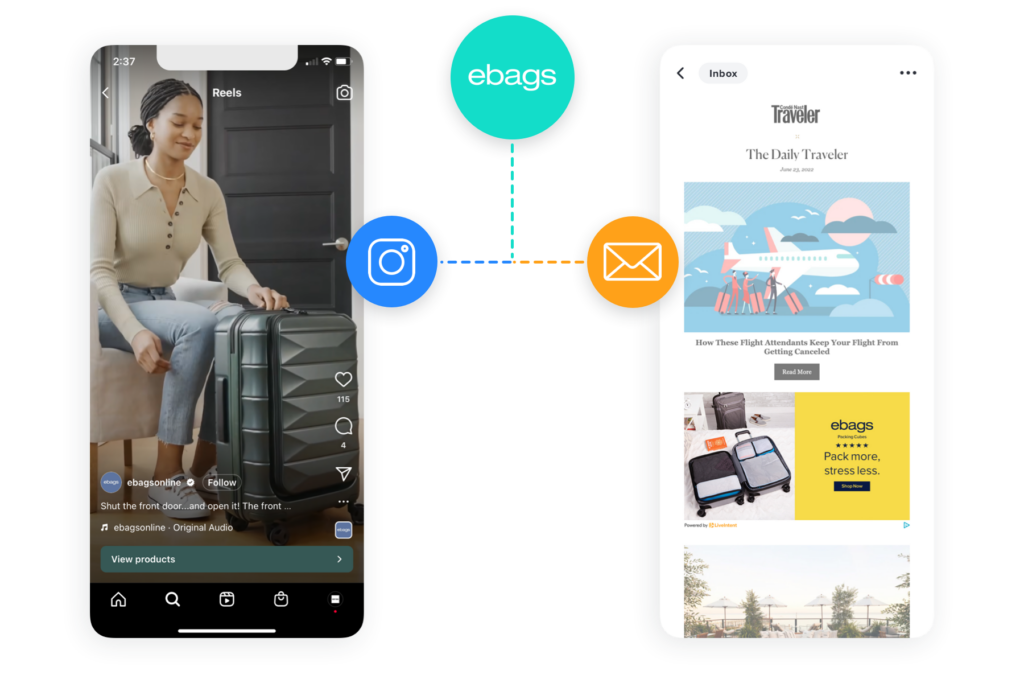“The mix has changed”: Why advertisers must diversify their marketing channels
In a recent interview with Digiday, Felipe Araujo, chief digital officer of shoemaker Cariuma, made an interesting claim: He doesn’t use a so-called marketing playbook. He does, however, stand by one particular rule: Diversify your media mix.
“It changes throughout the year,” Araujo says. “There’s seasonality of the platforms as well and we’re learning that. That’s why it’s so important for you to have a diversified channel mix. At different times of the quarter or the year, you’re seeing this channel is working really well.”
Last year, for example, Cariuma started expanding beyond platforms like Facebook and Instagram.

“We saw a lot of success on channels like LiveIntent and channels like Google, outside of text ads, going more into shopping, smart shopping, discovery units, YouTube, etc.,” Araujo says. “We still have success on Facebook and Instagram, it’s just that the mix has changed in terms of how reliant you are on [them] and what [they] represent in your media mix.”
Araujo isn’t alone in his eagerness to diversify — at least, he shouldn’t be. If advertisers want to continue engaging and acquiring new customers, they need to start expanding their horizons to untapped touchpoints.
Here’s a closer look at why it’s so important to diversify your marketing channels.
The importance of diversifying your marketing mix
You know the old saying: “Don’t put all your budget eggs in the marketing basket.” Doesn’t it just roll off the tongue?
But seriously, if you invest too much in just one marketing channel, you risk missing out on valuable audience reach and acquisition opportunities. Not to mention, if that singular, well-performing channel suddenly changes its algorithm or stops delivering results, you’re left without a fallback plan.
As Erin Gregory, director of marketing of eBags puts it, “A cardinal rule of marketing is that things inevitably stop working. A strategy you’ve had that’s performed day in and day out will eventually go off the rails. So you have to be diversifying in order to hedge against that effect.”

After all, customers use many different platforms along their path to purchase, so you should be prepared to meet them along their journey. Now, that doesn’t mean you need to quit using big-budget channels like Facebook or Google altogether. It just means you need to complement them in order to expand your reach and future-proof your business.
As Bret Fredrickson, customer acquisition manager of Vuori, says: “Facebook’s been a huge, huge channel for us, but we like to operate as if it is going to disappear tomorrow,” he says. “That means taking advantage of it while it’s here, but also looking at new channels and investing where we think attention will go to.”
Start diversifying now with email advertising
If you’re looking to branch out from your usual platforms and invest in new channels for customer acquisition, start with email.
Email is an opt-in, direct-to-consumer channel that’s stood the test of time — and it’s only growing stronger. According to Adobe, Americans spend almost six hours each day with email but only 2.5 hours with social media sites. That’s because email is a homepage for their curated online experience: it contains one-to-one messaging from coworkers, family, friends, publishers, and brands.
By running ads in email newsletters, brands can reach built-in audiences of readers with real-time programmatic campaigns. For example, advertisers can use Lookalike Audiences to run email ads that reach customers who are most likely to convert. They can also run custom display and native ads, since email supports a range of flexible ad formats and sizes.

Now that third-party cookies are going away, brands can even use email to grow their first-party data footprints and launch more privacy-safe ads.
“Email is the largest identifier ever created by humans by far, and it can be used in adtech, martech, and madtech,” says Jason Oates, chief business officer at LiveIntent. “Having that asset and building up that first-party data is really helpful because you can start building a people graph of all of your customers […] Now you’ve got a pool of identifiers that you can actually leverage in different media.”
That means email is the gift that keeps on giving: it offers up valuable first-party data that you can then use to continue diversifying across channels. Ready to get started? Learn more about how to diversify your marketing mix with email.


